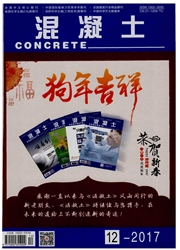

 中文摘要:
中文摘要:
沿海、盐碱地电厂等混凝土建、构筑物受盐害作用,导致其使用寿命降低。故引入对三乙烯四胺双向电渗长期效果的研究。对混凝土试块进行恒流通电,去极化后,进行半年的干湿循环测试,每次均对试块钢筋的腐蚀电流和腐蚀电势以及钢筋/溶液界面电荷转移电阻进行观测;半年后,对其中氯离子含量、阻锈剂含量进行测试。结果表明:双向电渗后,其电化学参数最稳定,钢筋处于钝化状态,而不处理的和电化学除氯处理的钢筋已先后锈蚀。同时,半年后,阻锈剂仍有一定残余;经过双向电渗技术处理的试块抵抗氯离子侵入能力最强。
 英文摘要:
英文摘要:
In coastal and saline alkali area, power plants and other concrete structures are subjected to salinization, resulting in decreaseof service life.Therefore,it introduces a long-term experimental study of bilateral electro-osmotic method with triethylenetetramine in-hibitor.The concrete block is tested with galvanostatic method, after depolarization, wet and dry cycle test last for six months.Each time thecorrosion current and corrosion potential of steel as well as the charge transfer resistance of the steel/solution interface were observed.Aftersix months,the chloride ion content and rust inhibitor content were tested.The results show that after the bilateral electro-osmotic treat-ment, it get the most stable electrochemical parameters, and the reinforced is passive.While after electrochemical chloride extraction orwithout treatment, reinforced has already corroded.At the same time, six months later, there is still some residual rust inhibitor.The blockswith the bilateral electro-osmotic method has strongest resistance to chloride intrusion.
 同期刊论文项目
同期刊论文项目
 同项目期刊论文
同项目期刊论文
 期刊信息
期刊信息
